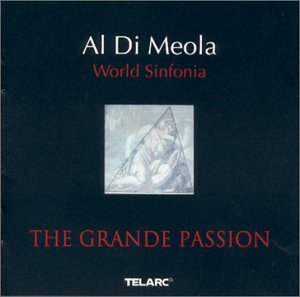
| Artist: | Al Di Meola |
| Title: | World Sinfonia - The Grande Passion |
| Released: | 2000 |
| Label: | Telarc Jazz |
| Time: | 59:39 |
| Producer(s): | Al Di Meola |
| Appears with: | Stanley Clarke, Jean-Luc Ponty, Paco de Lucia, John McLaughlin |
| Category: | Jazz |
| Rating: | *********. (9/10) |
| Media type: | CD |
| Purchase date: | 2000.11.03 |
| Price in €: | 14,99 |
| Web address: | www.aldimeola.com |